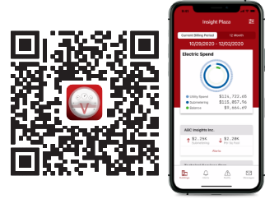Submetering Q&A
Straight answers to frequently asked questions about submetering
As energy nerds, we love to get into the weeds about how to use building submeter data to improve efficiency and profitability.
But every now and then, it's time to dial back the geek-speak and discuss the basics. Here are straight answers to the submetering questions we hear the most.
What is submetering?
A: Submetering measures utility consumption in specific areas of the building or of specific equipment by placing additional meters "behind" or "sub to" the meter installed by the utility provider.
What's the value of submetering?
A: Submetering provides visibility into exactly how much, when, and where utilities like electricity are consumed. This data has so many benefits. Here are some of the biggies:
- Ensure tenant comfort
- Optimize equipment efficiency
- See how changes impact performance
- Predict budget needs
- Reduce energy usage
- Recover tenant utility costs
About that last point – We often hear, “We’re recovering all possible costs.” And then when we look into it we find more to recover.
Why are we able to find more? Because submetering is detailed work and takes a skilled and experienced team to do it right. There are dozens of places where small mistakes and inefficiencies lie in wait to suck the profits out of your operations. We regularly find inaccuracies in rates, meter readings, meter communications, and unit conversions, among other factors.
What are the costs associated with submetering?
A: Buildings vary a lot, so it's impossible to give a number without knowing the details. A decent estimate for one good electric meter and related CTs and voltage connections is ~$1200. (Prices vary based on meter model and measurement capabilities.) You also need to include the costs of installation, commissioning, and ongoing verification to ensure your data is accurate.
But when evaluating cost, we recommend you also consider what submetering gets you. For starters, tracking utility usage literally pays off by increasing efficiency and NOI, as well as by decreasing disputes and high-ticket maintenance issues.
What is revenue-grade metering?
A: Revenue-grade metering refers to using higher-quality meters that are more accurate than a standard meter. These types of submeters are generally required for tenant billing. An added benefit of revenue-grade meters is that they generally have more memory and can store a month's worth of readings in the meter. This feature is useful for avoiding data gaps and having to estimate bills.
To learn more about the pros and cons of revenue-grade vs standard meters, read our Mini Guide to Meter Selection.
How do I submeter and bill for a VRF system?
A: Due to how the systems are set up, VRF billing is even more complicated than other tenant billing. We recommend you have someone with refrigeration experience involved in submetering and billing for VRF systems (this is a service we offer). Read our article on VRF billing challenges for more info.
What brand of submeters are the best?
A: We are product-agnostic and happy to work with whatever equipment you have or prefer. HOWEVER, we always recommend going with non-proprietary meters and systems to avoid being locked out of your own data or being forced to pay for services you don't need.
What submetering software is the best?
A: We know this sounds biased, but our software is the best. We lured the smartest controls guy away from Johnson Controls (JCI), who, along with a fine young engineer (now our CTO), developed our software specifically for submetering, billing, and plant monitoring.
Here's just some of what our software does. One portion is dedicated to collecting the data from cloud, scrubbing it to make sure it's in a usable format, checking it for consistency, flagging it for human review if necessary, and keeping those billions of data points organized. Billing is handled in another part that address the needs and the complexity of varying rate schedules, multipliers, and the numerous other details required to prepare a truly accurate billing package.
Lastly, we're always investing in and improving our software at no extra charge to our customers. Rather than move upgrades into a new module at an added cost, we regularly update and add features to the entire platform to make it even more robust without added fees.
You Might Like
About utiliVisor
Your tenant submetering and energy plant optimization services are an essential part of your operation. You deserve personalized energy insights from a team that knows buildings from the inside out, applies IoT technology and is energized by providing you with accurate data and energy optimization insights. When you need experience, expertise, and service, you need utiliVisor on your side, delivering consistent energy and cost-saving strategies to you. What more can our 45+ years of experience and historical data do for you? Call utiliVisor at 212-260-4800 or visit utilivisor.com



